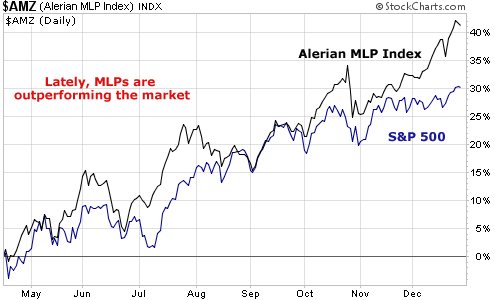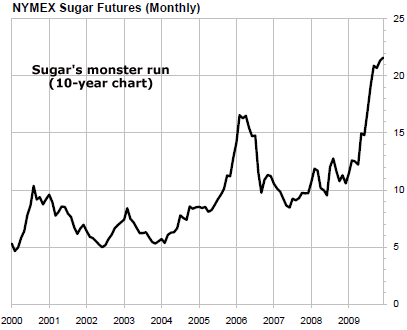| Home | About Us | Resources | Archive | Free Reports | Market Window |
Thank ExxonMobil for These Solid 10% DividendsBy
Saturday, January 2, 2010
ExxonMobil is the world's largest oil company. Two weeks ago, Exxon announced it would purchase XTO Energy for $41 billion...
XTO Energy is a giant natural gas company. It's the second-largest producer of natural gas in America, and Exxon's biggest acquisition since it bought Mobil 10 years ago. Imagine if Coca-Cola spent $41 billion on a tea company... or Ford spent $41 billion on a bicycle factory. You'd know big changes were afoot. So why is the world's largest oil company paying $41 billion for a natural gas business? Six days before announcing the merger, Exxon published a special report on its website titled "Outlook for energy: a view to 2030." In this report, Exxon says electricity generation is the largest and fastest-growing source of energy demand in America. Natural gas is cheap, abundant, and produces 60% less emissions than coal. As electricity demand grows, Exxon thinks natural gas will be the fastest-growing fossil fuel in America. In other words, Exxon bought XTO because it plans to supply the power industry with natural gas. "This is not a near-term decision; this is about the next 10, 20, 30 years," Rex Tillerson, the chairman and chief executive of Exxon said in a conference call. "We think there will be significant demand for natural gas in the future." To follow Exxon's lead, you could simply invest in higher natural gas prices in the long term. I don't like this option. We're finding so much natural gas in America right now, there could be a decade-long supply glut and low prices for years to come. High storage costs create an additional headwind for gas investors. Power plants and utilities that use natural gas to generate electricity are a second option. This industry is a direct beneficiary of low gas prices, increasing demand for electricity, and the fashion for clean energy. With these excellent fundamentals, the natural gas electricity industry is one of the safest industries in America for your capital over the next decade. I discussed this opportunity in my previous column, here. Midstream natural gas companies are a third way to play this trend. These companies gather, process, store, and transport natural gas. They run pipelines, compression stations, storage tanks, refineries, ports, field-gathering stations, and terminals. They sit between natural gas producers and consumers. The more gas America uses, the more fees they earn. Because these companies are so valuable to America's economy and infrastructure, the government subsidizes them with tax breaks. Entrepreneurs get to set up these businesses as special corporate structures known as Master Limited Partnerships. MLPs don't have to pay corporate tax as long as they distribute 90% of their profits each quarter to their stock holders. The "blue chip" MLPs pay 8% dividends. The more risky ones pay anything from 10% to 20% in annual dividends. Midstream gas stocks have risen this year in line with the broad stock market. But recently, they've begun to outperform. I bet it's the Exxon-XTO deal. By buying XTO, Exxon has given a big "thumbs up" to midstream gas investors.  I always begin my research on midstream natural gas companies at the National Association of Publicly Traded Partnerships. The NAPTP has all kinds of information on these companies, from tax treatment to investment presentations. It also maintains a list of traded MLPs, MLP funds, MLP ETFs, and MLP indexes. You can access this list here. Good investing, Tom
Further Reading:
If You Like Earning Steady Income, There's No Better Business Than This Market NotesTHE HOTTEST COMMODITY OF THE DECADE
|
In The Daily Crux
Recent Articles
|


